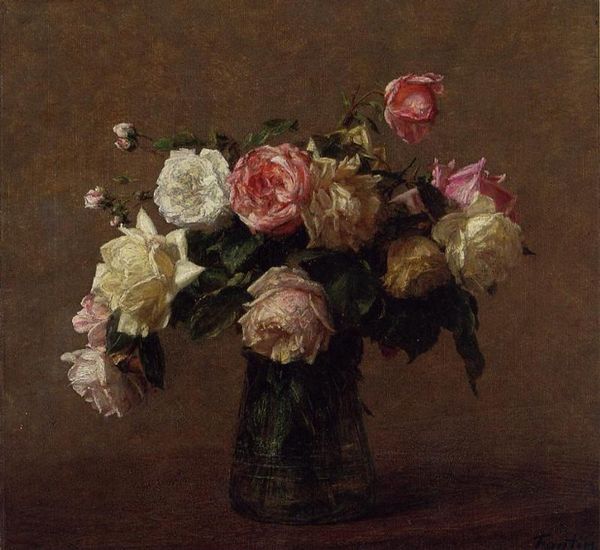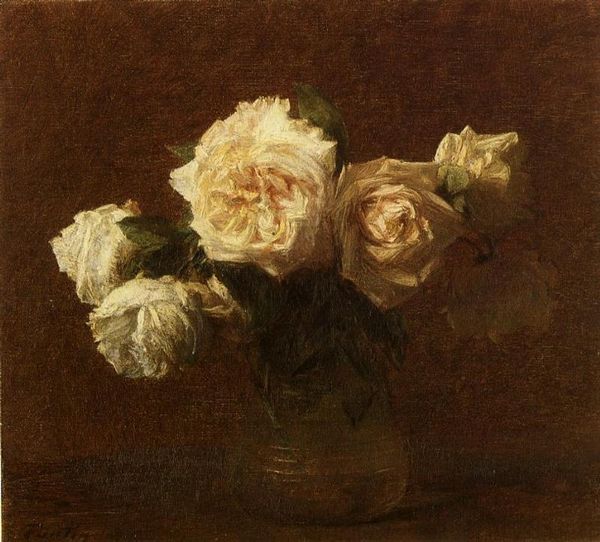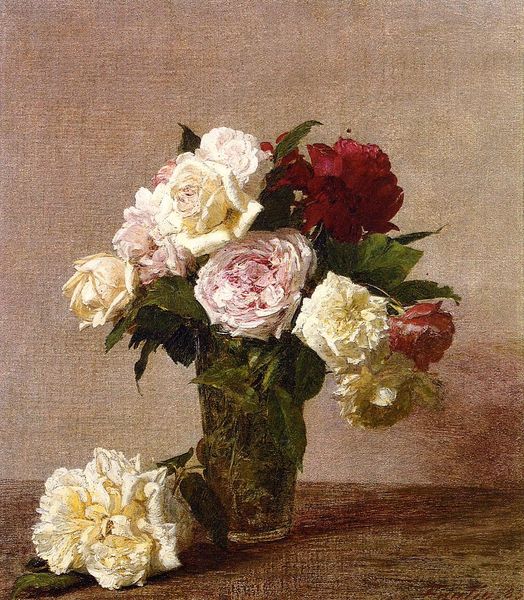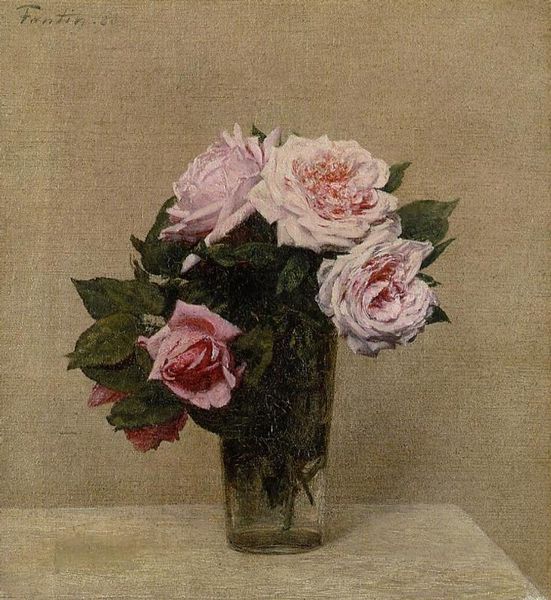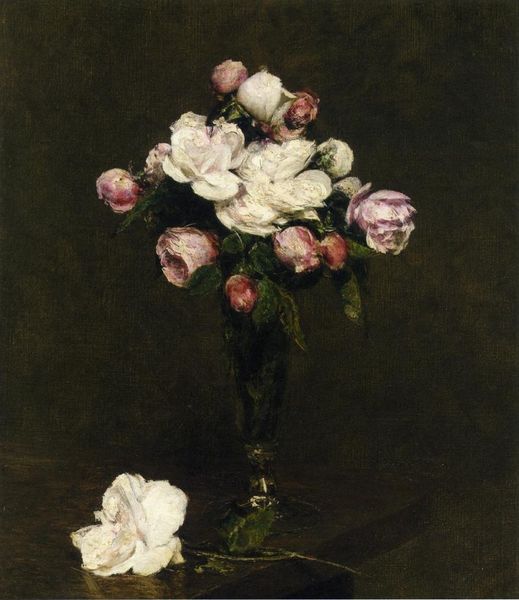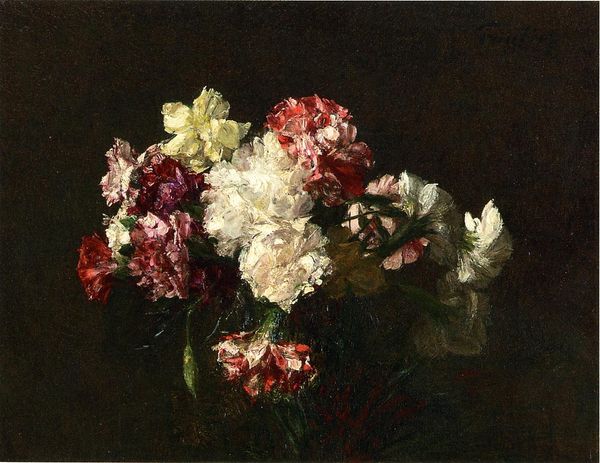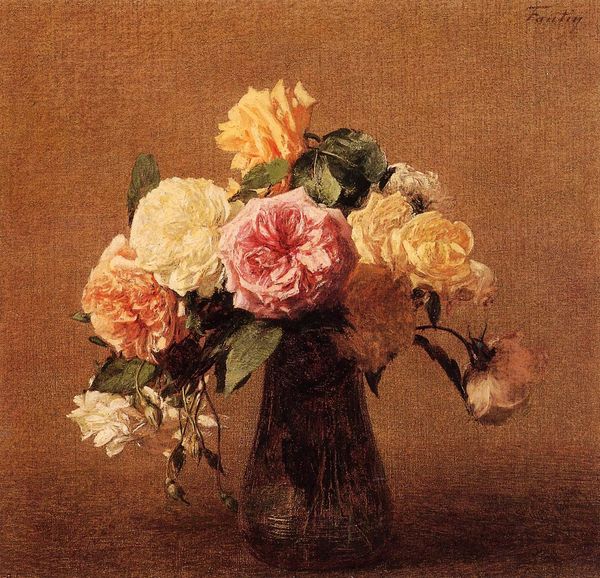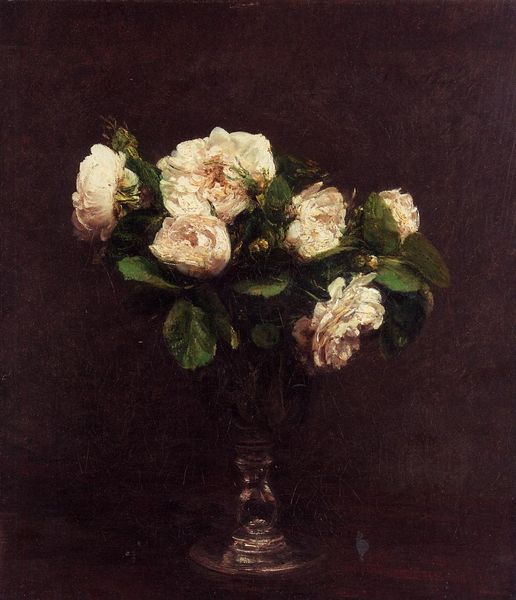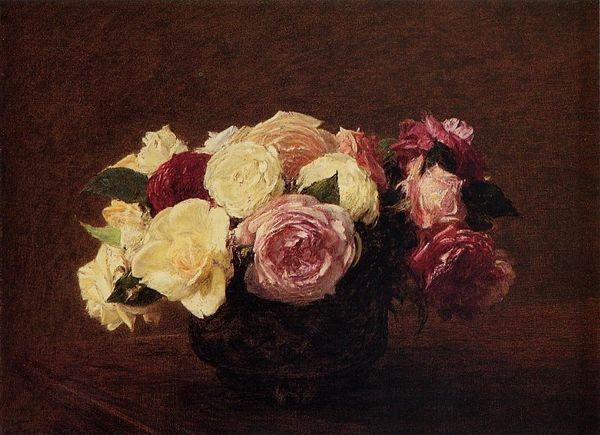
painting, oil-paint, photography, impasto
#
portrait
#
still-life
#
painting
#
oil-paint
#
flower
#
photography
#
oil painting
#
impasto
#
plant
#
romanticism
#
realism
Copyright: Public domain
Henri Fantin-Latour rendered these roses in oil paint, a medium favored by the French academy, but here used in the service of pure aesthetic pleasure. Fantin-Latour’s still lifes were highly prized by the French bourgeoisie, who were eager to adorn their homes with symbols of wealth and taste. Born in 1836, the artist lived through a period of immense social change, and his paintings often reflected the growing divide between the traditional values of the aristocracy and the emerging ideals of the middle class. While not overtly political, Fantin-Latour's work challenged the prevailing academic standards of the time, which favored historical and mythological scenes over everyday subjects like flowers. By focusing on the beauty and simplicity of the natural world, Fantin-Latour offered a subtle critique of the social structures that upheld those standards. Art historians can use archival records, exhibition catalogues, and contemporary reviews to gain a deeper understanding of the cultural significance of Fantin-Latour's work and its place within the complex social landscape of 19th-century France.
Comments
No comments
Be the first to comment and join the conversation on the ultimate creative platform.
